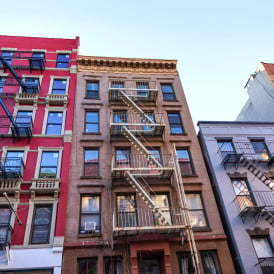How to pay for a NYC roof deck without a huge assessment

A finished roof can be a valuable addition to a building—especially when other shared amenities present health risks.
Zumper via StreetEasy
Most shared amenities at New York City apartment buildings are closed to prevent the spread of coronavirus. Roof decks, however, are places where residents can be outside safely and top many New Yorkers' NYC apartment wishlists as a result of the pandemic.
Even if a renovated roof is not in your building's capital plan, many boards are seeing if this is something they can offer their shareholders or apartment owners and at the same time add value to the building.
Many New Yorkers quit the city when the coronavirus case numbers began to rise, and that exodus has worried many boards concerned about resales, particularly those in Manhattan, says Richard Klein, a partner at the law firm Romer Debbas.
"To the extent that a board can make their building more desirable, having roof space helps—it can be a really beautiful addition," he says.
Low interest rates are another reason why now is a good time to upgrade a building's roof. Even so, they are expensive projects—here are a few ways you might be able to pare down the cost and avoid hefty assessments or sizable temporary common charge increases.
Borrowing and refinancing
Condos and co-op boards are both able to borrow money to do capital projects and one way of avoiding hefty increases to your maintenance in a co-op is to refinance.
"No one wants to come out of pocket for thousands of dollars, especially in today’s financial climate," says Harley Seligman, senior vice president at National Cooperative Bank (a Brick Underground sponsor). A co-op can leverage the land and the building as an asset and borrow against it.
"Depending on how low they want their monthly payments to be, the majority of our borrowers for co-ops take a 10-year, fixed-rate loan spread over a 30-year amortization—so it is a balloon payment at which time they can refinance to a new loan," Seligman says.
Selling some space
In some buildings, the roof space is only accessibly to the owner or shareholder on the top floor. One Upper East Side resident tells Brick Underground that her 70-unit building sold the roof to the penthouse owner several years ago—something she now sees as a missed opportunity. "One building two blocks up just did their large roof over and they created a netted play space for kids and put up a very large screen to show movies up there in the summer," she says.
If a building doesn't want to create a shared space, one option is to sell portions of the roof space. In smaller buildings with three or four units, it might be possible for each apartment owner or shareholder to have a portion of the roof. In buildings with more units, only some owners will be able to own roof space.
"If the space is large enough to partition, you can allocate shares, sell the space and charge maintenance every month and that's a way for the building to get some extra income," Klein says.
Depending on the type of space you want and whether you have views (and might lose them if your neighbor builds higher), selling air rights might be an option.
"If you have air rights to sell, that’s something you could do, and use that money—but that might hurt you because if your neighbor goes up higher, you might lose some of the appeal," says Klein.
Grants and loans
There are abatements and incentives available to buildings who want to install green roofs on multi-family buildings. Most green roofs are designed to save on energy costs rather than provide recreational space. However, Klein says these grants and loans are worth considering.
"That’s something that should always be explored and done if possible, but it doesn't seem like the programs would result in a roof that is conducive to hanging out with a glass of wine," he says.
You Might Also Like






























